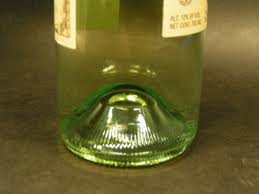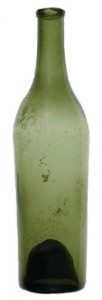Wine bottle color, shape really matter
 In my previous post I outlined the reasons for different shapes of wine bottles. In this post I’ll explain the reason behind the bottle’s other features.
In my previous post I outlined the reasons for different shapes of wine bottles. In this post I’ll explain the reason behind the bottle’s other features.
The punt of a wine bottle – the deep indention in the bottom of the bottle – is the most questioned of modern bottle shapes. In early bottles, punts added strength to the bottom of the glass and helped stabilize the base, as hand-blown glass can be wrought with imperfections. Punts are common on sparkling wine bottles because it was common practice in Champagne, France, to stack the bottles neck to punt. Punts can also make a wine bottle appear bigger and more impressive. Another function is that it adds an elegant placement for the sommelier’s thumb while pouring in fine dining situations. However, its main purpose today is cosmetic.
The size and shape of sparkling wine bottles has clearly defined roots. In the early days of Champagne-making, it was a common occurrence for bottles to explode from the pressure (roughly 90 pounds per square inch) generated during fermentation. Some workers even wore protective gear for this reason. Champagne bottles are typically made of thick glass with a pronounced punt. It’s not necessary in modern bottling but is an ingrained tradition we will most likely not see changed.
Although all wine is best kept in dark-colored glass, variations in bottle colors can also be explained by region.Generally, whites and roses are in clear glass, while reds are in darker glass. Dark bottles, either because of regional tradition or production, are produced in shades that range from yellow-green and pale blue-green to almost black. In Germany, brown glass was used to differentiate wine from the Rhine region versus the green bottle from Mosel. Blue glass bottles became a popular alternative about 30 years ago.
The variations in size of the early bottles can be attributed to the challenges of early glass-making. In early wine history, most wine was measured out and then put into a bottle, so bottle size didn’t matter much. But for modern bottling we now have precise regulations, with 750 milliliters being a standard size.
- GREEN GLASS 2011 Domaines Schlumberger Pinot Blanc, France (about $20 retail)
- BROWN GLASS 2010 Frank Family Cabernet Sauvignon, California (about $48 retail)
- CLEAR GLASS 2010 Robert Mondavi Fume Blanc, California (about $20 retail)
 The array of bottle designs has an intriguing history.
The array of bottle designs has an intriguing history.